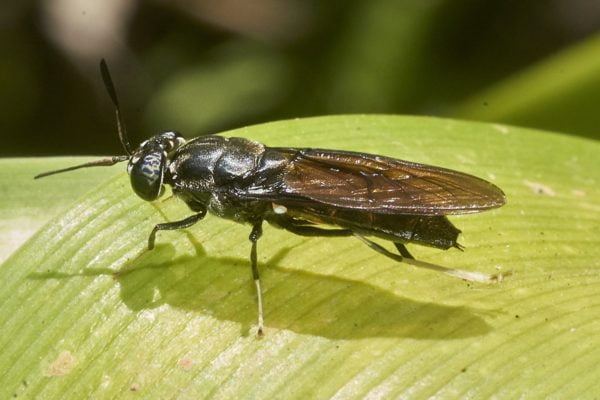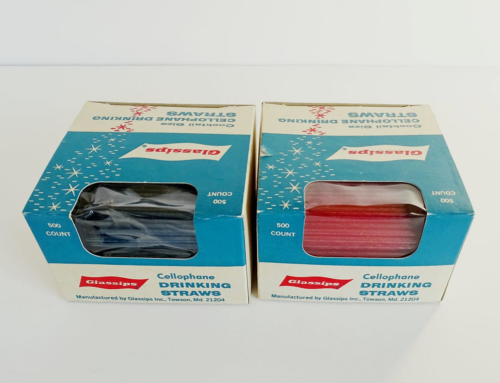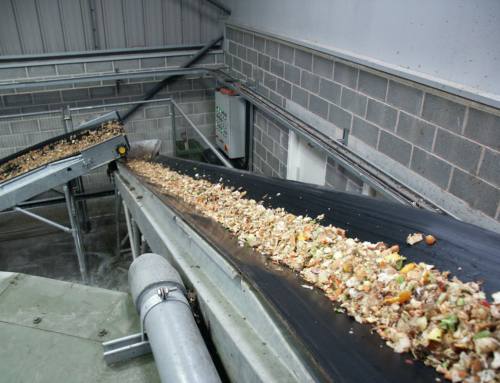by Beth Raine
6 minute readFeeding a growing global population is placing increased pressure on agriculture to produce more protein for consumption. The global demand for meat is expected to more than double from 2000 to 2050.
Meeting it would entail a drastic increase in production of both crops and animal feed, an expansion in the amount of land used for agriculture and an increase in agricultural intensity, all of which will have negative environmental impacts. If there’s an alternative, less damaging way to meet the need for protein, it’s probably worth investigation.
One option would be to harness the potential of the vast protein source available in insects. Insects present a high protein feed alternative for use in agriculture and for direct consumption by humans, and can be reared on waste products that are otherwise difficult to utilise. They could therefore provide a flexible and highly efficient approach to generating protein whilst also having a lower environmental footprint than traditional livestock. Is this a viable possibility?
If you wanna eat my larvae…
First let’s look at the potential for insects to supply feed for livestock. Insect larvae can be mass reared on a wide variety of both dry and wet feedstocks with moisture content up to 85–95%, which enables the use of lots of organic matter that would otherwise be difficult to dispose of. It is also possible to rear large numbers of high-nutrient larvae in a short time and restricted spaces. Once reared, the larvae can then either be processed directly for use to supplement animal feed, or converted into high protein-content fertiliser for use in crop production.
They may sound like a peculiar source of feed, but insects are already a natural component of the diet of many animals. They have a high nutrient content (with 50–82% protein as a dry product), making them a high-quality supplement to animal feed. In India, for example, grasshoppers mass produced at insect farms are already commonly used as animal feed.
Another promising species for larvae farming is the black soldier fly (Hermetia illucens), which has considerable potential as a partial addition to livestock feed. It also illustrates the potential waste management benefit of using insects for feed: the mass rearing of insects has the potential to recover proteins from organic waste that would otherwise be difficult to get rid of. Its larvae can be reared on industrial outputs like distillery by-products and food waste, and according to recent research on human faeces and abattoir waste.

Superfly: the black soldier fly’s larvae could be processed for animal feed. Photo: Mike Gordon (CC BY-NC-ND 2.0), via Flickr
According to the United Nations Food and Agriculture Organisation, perhaps a third of food intended for human consumption is currently wasted – around 1.3 billion tonnes per year. There is clearly a need to increase the efficiency of food production, but while huge amounts are going to waste, insects can be used to recover up to 70% of the proteins the contain. Even if the insects are not used further, they can still provide an efficient way of processing waste.
In China, food waste is being digested in factories housing millions of cockroaches and maggots. Although this sounds like a scene from a horror film, these Chinese factories have been important in dealing with the growing amounts of urban food waste produced from large cities.
Being able to raise them on waste is not the only thing that makes insects a commercially attractive food source. They can be produced locally, on a small scale; and while many feed crops are seasonal, insects can be produced all year round, so long as the stable temperatures they require for optimal growth and development can be maintained.
Pig in the middle
Side stepping the low-efficiency transition of feeding insects to livestock, insects can also be used directly as food for human consumption. Many national and regional diets already include insects, and increasing the role of insects in human diets presents a possible solution for meeting food requirements due to their high protein content conversion rates in farming.
This might seem a bit gross, and insect textures fall on a spectrum from ’squishy’ to ’crunchy’, which is quite different to what we’re used to in a conventional Western diet. However, we don’t have to take the ‘I’m a Celebrity…Get Me Out Of Here!’ approach of eating live and wriggling creatures. For example, insect flour made from crickets is leading to the development of products that can be used as a replacement for normal everyday foods.
The production of insects has far lower land requirements, water, CO2, and energy usage than meat production. Given the cheap, sustainable ways in which they can be farmed, insects could be the next step in the development of meat substitutes. Insects present a positive protein alternative for the ethical consumers who wish to avoid animal-based products. In the UK, this alternative is starting to become tangible as we see the development of restaurant standard food with an insect base, such as burgers made from plant-based protein and mealworms, or bug powder falafels.
Fly in the ointment
Despite its potential benefits, wider use of insects for food and animal feed in Europe is currently held back by regulation. In particular, regulation banning the use of animal protein as animal feed was introduced following the outbreak of BSE in the 1990s. As a result, the use of processed animal proteins, including insects, as livestock feed is currently limited to pet and fish food. However, the International Platform of Insects for Food and Feed (IPIFF) is working to develop new EU regulations to enable insects to be used as feed for farm animals, poultry, and other livestock.
As the demand for fish meal and livestock feed increases, and while there remains high volatility in the supply, insects represent a viable solution. Insect feed markets could be more stable than current animal feed markets – animal feed currently makes up 60–70% of the costs of animal production.
For humans, insects still legally fall under the category of ’novel foods’, which are foods that aren’t used for human consumption to a significant degree. Companies producing insects therefore need authorisation to commercialise their products. A draft EU regulation that has recently been consulted upon proposes that, as insects are increasingly being consumed and exported to the EU, these rules may soon change to allow freer commercialisation of insects. If approved, it would open the door for Europeans to access a greater range of grub(s).
There’s still a lot of work to be done to realise the full benefits insects can deliver at commercial scale. Further research is needed into the nutritional value of insect-derived products and their impact on animal livestock production systems. In addition, a more detailed understanding of feed safety and process technology is critically important for introducing insect feed into agricultural feed markets.
Alongside this scientific and regulatory work, we also need to start changing people’s attitudes to the role insects can play in our lives, particularly with regard to removing the ‘yuck factor’ involved with eating them.
While an insect rich diet may seem too much to stomach for some, the greater unpalatable truth is that radical behaviour changes will be required in many areas of life if we are to sustain a growing global population. Perhaps insects can help humanity to squirm its way out of the mess it’s in.
Featured image: Basile Morin (CC BY-SA 4.0), via Wikimedia Commons







Leave A Comment